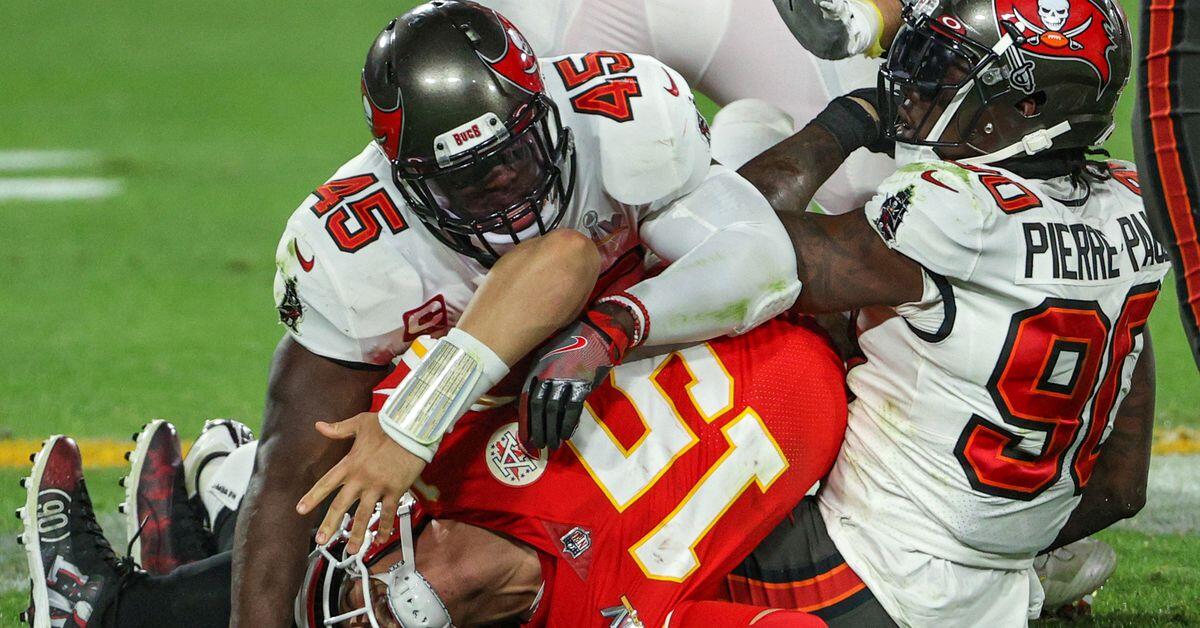Days after the Kansas City Chiefs defeated the San Francisco 49ers in Super Bowl LIV, the team made a crucial decision: that for the 2020 season, it would do its best to bring all of its significant players back for another season.
And with that, the Chiefs’ #RunItBack campaign was underway.
General manager Brett Veach did an outstanding job of bringing back the core of the team’s championship roster. When the team opened the 2020 season against the Houston Texans on September 8, free-agent guard Kelechi Osemele, rookie running back Clyde Edwards-Helaire and rookie cornerback L’Jarius Sneed were the only new faces among the team’s starters. Even that calculation is a little deceptive — because guard Laurent Duvernay-Tardif and running back Damien Williams had opted out of the season, while cornerback Bashaud Breeland was serving an NFL suspension during the first four games.
In the final analysis, however, that approach might have been a mistake.
It wasn’t because it didn’t work. The team returned for a third consecutive AFC championship and a second-straight Super Bowl. For most teams — in most circumstances — that might have been enough.
But this is the Chiefs team led by quarterback Patrick Mahomes. During that offseason, he had signed a 10-year contract extension worth nearly half a billion dollars. In the 12 years, he would now be under contract, any season resulting in anything other than a league championship would likely constitute a waste of resources.
To maximize the team’s success during this period, Kansas City needed to shift its focus to developing young, inexpensive talent — not on re-signing older, veteran players. To put it in musical terms, keeping the band together eventually had to give way to bringing in young players fresh out of the conservatories, with a generational talent at quarterback — one with a contract to match — that would be the best path to achieve sustained success.
And yet… it almost worked.
Absent just one or two injuries on the offensive line — or without the additional complication of the pandemic — it’s not hard to imagine the Chiefs winning their second consecutive championship in 2020. The team had simply waited a little too long to make significant investments in the line.
“We just hadn’t done a whole lot recently with the offensive line,” acknowledged head coach Andy Reid during a May interview. “You need to take care of that bunch.”
The Chiefs had tried to do so, acquiring offensive tackle Lucas Niang with the 96th pick of the 2020 draft. But in April, there had been no way for the team to know that he — along with Duvernay-Tardif — would be unavailable for the season. Those unexpected losses turned out to be just the first of five significant losses that left the line in shambles for the championship game, in which the Tampa Bay Buccaneers recognized that with the last one — the injury to left tackle Eric Fisher in the AFC championship — the offensive line had finally become the team’s most significant weakness.
But despite their ability to recognize (and exploit) Kansas City’s vulnerability in February, the Buccaneers have now made the same mistake. For the coming season, Tampa Bay has retained every single one of the starters on its championship roster — even though the Buccaneers were in a much worse position than the Chiefs after Super Bowl LIV. Kansas City started just three players aged 30 or older against San Francisco — but a year later, Tampa Bay fielded five 30-plus starters in the championship game. To make it worse, one more of their returning starters — and another starter who was injured for the championship — will turn 30 in 2021.
According to an analysis conducted by Football Outsiders, Tampa Bay had the league’s lowest number of 2020 games missed due to injury or COVID. With an older starting roster, that luck isn’t likely to last.
This doesn’t mean that the Buccaneers won’t contend for the championship this season. In fact, many of their older players are among the league’s best. But as the Chiefs demonstrated in 2020, too much reliance on older players increases the probability that injuries will become a significant factor — and running it back will make it more difficult for Tampa Bay to compete beyond 2021.
Both of these franchises waited a very long time between Super Bowl appearances — so on a certain level, it’s understandable that each chose to bring back the championship team.
But it was part of the reason that the Chiefs had to do what amounted to an emergency rebuild of its offensive line during this offseason — and during Mahomes’ tenure, the team isn’t likely to have many opportunities to do that again. To continue to remain competitive, the team will have to increase its reliance on developing young talent — and at this point, the 2021 draft class looks like a step in that direction.
Originally found on Read More


![[VIDEO] Meghan McCain Just Can’t Stop Blasting Biden Lately…](https://manateeherald.com/wp-content/uploads/2021/06/300-4IokkF.jpeg)




